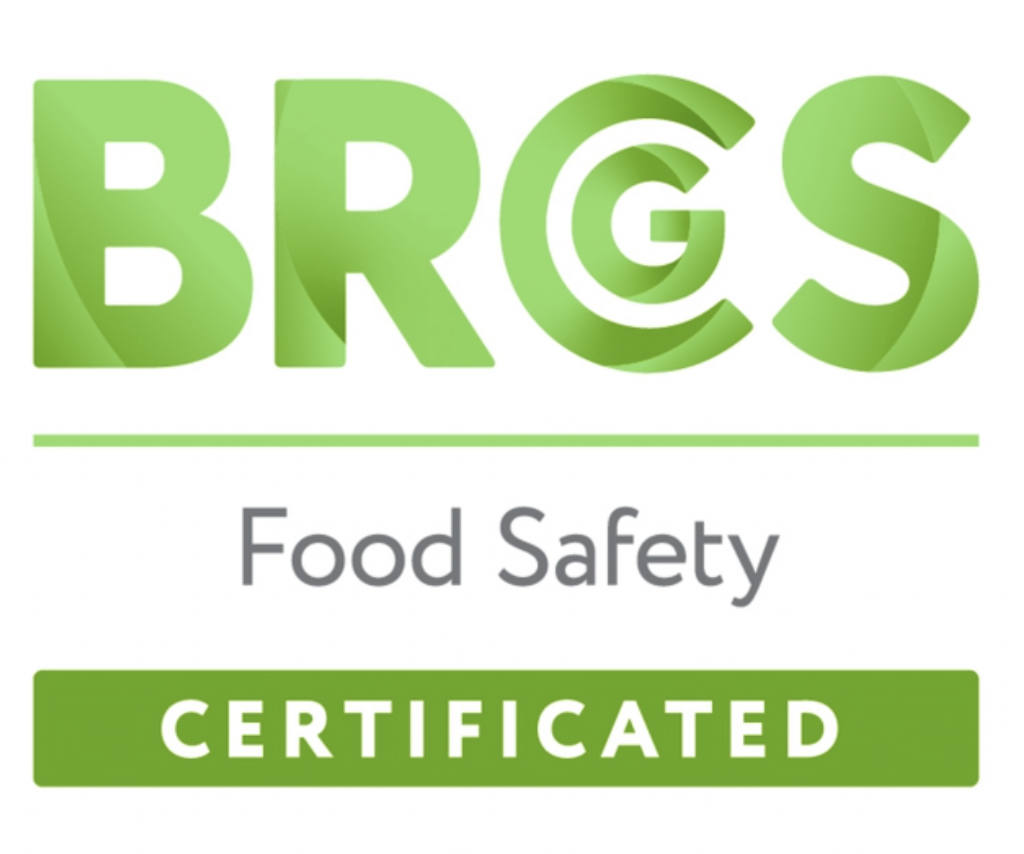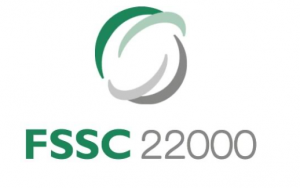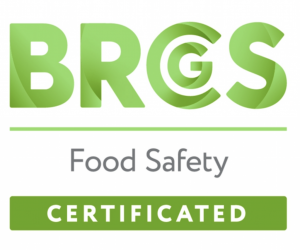BRCGS
- تم تطوير المعيار العالمي لسلامة الأغذية من قبل خبراء صناعة الأغذية من تجار التجزئة والمصنعين ومؤسسات خدمات الأغذية للتأكد من صرامته وتفاصيله ، ومع ذلك يسهل فهمه.
- نُشر معيار سلامة الأغذية لأول مرة في عام 1998 ، وهو الآن في إصداره الثامن وهو راسخ عالميًا. لقد تطورت مع مدخلات من العديد من المحددات العالمية الرائدة.
- يوفر إطارًا لإدارة سلامة المنتج وسلامته وشرعيته وجودته والضوابط التشغيلية لهذه المعايير في صناعة الأغذية ومكوناتها وتصنيعها وتعبئتها.
- يركز المعيار على:
- تشجيع تطوير ثقافة سلامة المنتجات ؛
- توسيع متطلبات المراقبة البيئية لتعكس الأهمية المتزايدة لهذه التقنية ؛
- تشجيع المواقع على تطوير أنظمة الأمن والدفاع الغذائي ؛
- إضفاء المزيد من الوضوح على متطلبات المناطق المعرضة لمخاطر الإنتاج عالية الخطورة والعناية العالية والعناية المحيطة العالية ؛
- توفير وضوح أكبر لمواقع تصنيع أغذية الحيوانات الأليفة ؛ و
- ضمان قابلية التطبيق العالمي وعلامات القياس للمبادرة العالمية لسلامة الأغذية (GFSI).
- العدد 8 من المعيار ينقسم إلى تسعة أقسام:
- 1. التزام الإدارة العليا
- يعد الالتزام على مستوى عالٍ أمرًا ضروريًا في تطوير ثقافة سلامة الأغذية الجيدة ، وبالتالي فهو ضروري لأي نظام لسلامة الأغذية ليكون فعالًا ولضمان التطبيق الكامل والتطوير المستمر لهذه الأنظمة.
- 2. خطة سلامة الغذاء – HACCP
- يمكّن التحليل الفعال للمخاطر والمخاطر الشركة من تحديد وإدارة تلك المخاطر التي قد تشكل خطرًا على سلامة منتجاتها وجودتها وسلامتها. يتطلب المعيار تطوير تحليل فعال للمخاطر وبرنامج لنقاط التحكم الحرجة (HACCP) بناءً على متطلبات نظام Codex Alimentarius المعترف به دوليًا.
- 3. نظام إدارة سلامة الأغذية وجودتها
- يضمن هذا القسم أن تعمل الشركة على أنظمة إدارة منهجية وموثقة جيدًا تشكل الأساس للتحكم في المنتج والعملية اللازمة لإنتاج منتجات آمنة وتلبية توقعات العملاء وضمان تدريب الموظفين.
- 4. معايير الموقع
- يغطي ذلك ملاءمة الموقع ونظافته ومراقبته ويتضمن موضوعات مثل ظروف المصنع ، والتنظيف ، والمعدات ، ومكافحة الآفات ، ومكافحة الأجسام الغريبة ، والدفاع عن الغذاء / أمن الموقع.
- 5. مراقبة المنتج
- إن وضع ضوابط على المنتجات مثل إدارة المواد المسببة للحساسية ، ومنع الاحتيال الغذائي واختبار المنتجات مهمة في التسليم الموثوق به لمنتجات آمنة وأصلية.
- 6. التحكم في العملية
- تضمن هذه المتطلبات وضع خطة HACCP الموثقة موضع التنفيذ على أساس يومي ، جنبًا إلى جنب مع الإجراءات الفعالة لتصنيع المنتج باستمرار بالجودة الصحيحة.
- 7. الأفراد
- يتم تناول التدريب والملابس الواقية وممارسات النظافة في هذا القسم.
- 8. مناطق مخاطر الإنتاج عالية المخاطر وعالية الرعاية والمحيطات ذات المخاطر العالية
- قسم محدد من المواصفة يتعامل مع المنتجات المعرضة للتلوث المحتمل بمسببات الأمراض وبالتالي تحتاج إلى ضوابط إضافية لضمان سلامة المنتج.
- 9. متطلبات المنتجات المتداولة
- قسم إضافي طوعي من المعيار للمواقع التي تشتري وتبيع المنتجات الغذائية التي تقع عادة ضمن نطاق المعيار ويتم تخزينها في مرافق الموقع ، ولكن لم يتم تصنيعها أو معالجتها أو تعبئتها في الموقع الذي يتم تدقيقه.

قد تكون مهتمًا أيضًا بما يلي:
BRCGS
- The Global Standard for Food Safety is developed by food industry experts from retailers, manufacturers and food service organisations to ensure it is rigorous and detailed, yet easy to understand.
- First published in 1998, the Food Safety Standard is now in its eighth issue and is well-established globally. It has evolved with input from many leading global specifiers.
- It provides a framework to manage product safety, integrity, legality and quality, and the operational controls for these criteria in the food and food ingredient manufacturing, processing and packing industry.
- The Standard focuses on:
- encouraging development of product safety culture;
- expanding the requirements for environmental monitoring to reflect the increasing importance of this technique;
- encouraging sites to further develop systems for security and food defence;
- adding clarity to the requirements for high-risk, high-care and ambient high-care production risk zones;
- providing greater clarity for sites manufacturing pet food; and
- ensuring global applicability and bench-marking to the Global Food Safety Initiative (GFSI).
- Issue 8 of the Standard is divided into nine sections:
- 1. Senior Management Commitment
- Commitment at a senior level is essential in the development of a good food safety culture and is therefore necessary for any food safety system to be effective and to ensure the full application and continual development of these systems.
- 2. The Food Safety Plan – HACCP
- Effective hazard and risk analysis enables the company to identify and manage those hazards that may pose a risk to the safety, quality and integrity of their products. The Standard requires the development of an effective hazard analysis and critical control point (HACCP) programme based on the requirements of the internationally recognised Codex Alimentarius system.
- 3. Food Safety and Quality Management System
- This section ensures the company works to well-documented, systematic management systems that form the basis for the product and process controls necessary to produce safe products, meet customer expectations and ensure staff are trained.
- 4. Site Standards
- This covers the suitability, cleanliness and control of the site and includes topics such as factory conditions, cleaning, equipment, pest control, foreign body controls and food defence/site security.
- 5. Product Control
- Establishing product controls such as allergen management, the prevention of food fraud and product testing are important in the reliable delivery of safe, authentic products.
- 6. Process Control
- These requirements ensure that the documented HACCP plan is put into operation on a daily basis, together with effective procedures to consistently manufacture the product to the correct quality.
- 7. Personnel
- Training, protective clothing and hygiene practices are covered in this section.
- 8. High-Risk, High-Care and Ambient High-Care Production Risk Zones
- A specific section of the Standard dealing with products that are susceptible to potential pathogen contamination and therefore need additional controls to ensure product safety.
- 9. Requirements for Traded Products
- A voluntary additional section of the Standard for sites that purchase and sell food products that would normally fall within the scope of the Standard and are stored at the site’s facilities, but which are not manufactured, further processed or packed at the site being audited.




